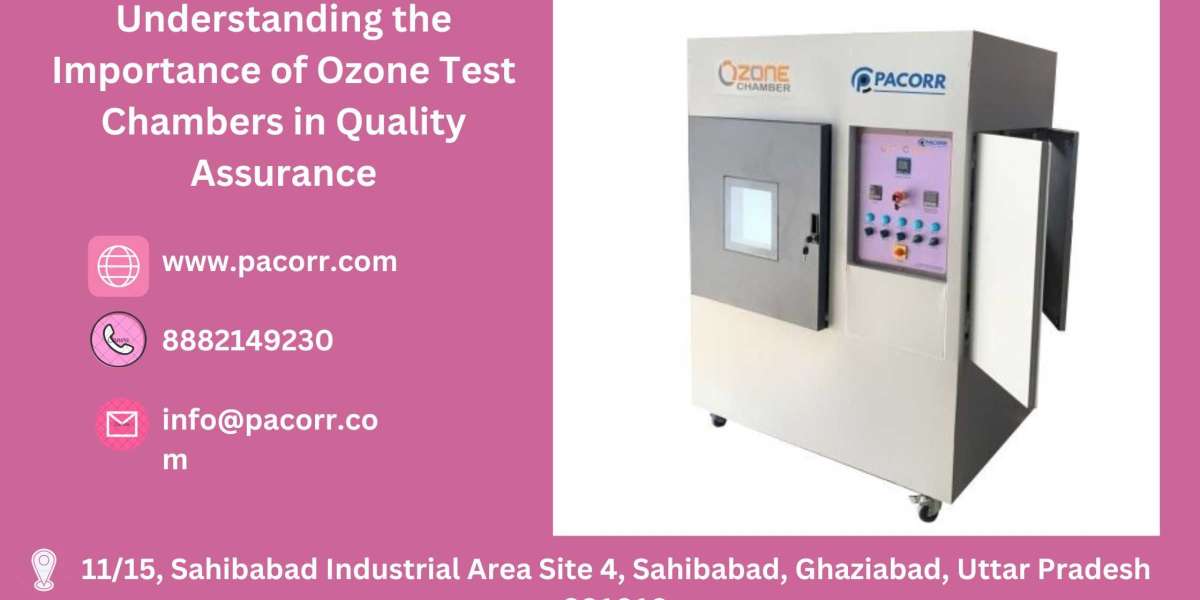Understanding the Ozone Chamber and Its Importance in Material Testing
Introduction
In the realm of material testing, ensuring the durability and longevity of products is paramount. One essential tool in this process is the Ozone Chamber. This article delves into the significance, functioning, and applications of the Ozone Chamber, a crucial instrument for industries focused on maintaining high-quality standards.
What is an Ozone Chamber?
An Ozone Chamber Price is a specialized testing instrument used to evaluate the resistance of materials to ozone exposure. Ozone, a highly reactive form of oxygen, can cause deterioration in various materials, particularly elastomers, plastics, and coatings. The Ozone Chamber simulates real-world ozone conditions, allowing manufacturers to assess the potential impact on their products over time.
Importance of Ozone Testing
Ozone exposure can lead to cracks, loss of elasticity, and overall degradation of materials. This is particularly concerning for industries where product reliability is critical, such as automotive, aerospace, and medical devices. By using an Ozone Test Chamber, manufacturers can:
- Predict Material Lifespan: Understand how materials will perform over extended periods.
- Ensure Product Safety: Identify potential failures before products reach the market.
- Enhance Quality Control: Maintain high standards by testing materials against stringent criteria.
How Does an Ozone Chamber Work?
The Ozone Chamber Manufacturer operates by creating a controlled environment with a specific concentration of ozone. Key components and functions include:
- Ozone Generation: The chamber generates ozone through an ozone generator, typically using a corona discharge method.
- Controlled Environment: The chamber maintains precise control over temperature, humidity, and ozone concentration to simulate various environmental conditions.
- Sample Exposure: Test samples are placed inside the chamber, where they are exposed to ozone for a set period.
- Monitoring and Analysis: Advanced sensors and monitoring systems track the exposure, and results are analyzed to determine the material's resistance to ozone.
Applications of the Ozone Chamber
The Ozone Chamber is widely used across multiple industries for various applications:
- Automotive: Testing rubber components such as tires, seals, and hoses to ensure they can withstand ozone exposure and prevent premature failure.
- Aerospace: Evaluating the durability of elastomers and polymers used in critical components exposed to high altitudes where ozone concentration is higher.
- Medical Devices: Ensuring that medical-grade rubber and plastic materials maintain their integrity and safety over time.
- Consumer Goods: Assessing the longevity of products such as footwear, sporting goods, and outdoor equipment.
Advantages of Using Pacorr’s Ozone Chamber
Pacorr Testing Instruments Pvt Ltd offers state-of-the-art Ozone Chambers designed to meet the rigorous demands of material testing:
- Precision Control: Advanced control systems for accurate ozone concentration, temperature, and humidity settings.
- Robust Construction: Durable construction ensures long-term reliability and consistent performance.
- User-Friendly Interface: Intuitive controls and software for easy operation and data analysis.
- Compliance with Standards: Adheres to international testing standards, ensuring globally recognized test results.
Conclusion
The Ozone Chamber Supplier is an indispensable tool for manufacturers aiming to enhance the durability and reliability of their products. By simulating real-world ozone exposure, this instrument provides valuable insights into material performance, helping industries maintain high-quality standards and ensure product safety. Pacorr Testing Instruments Pvt Ltd's Ozone Chambers are at the forefront of this critical testing process, offering precision, reliability, and ease of use to meet diverse testing needs.



